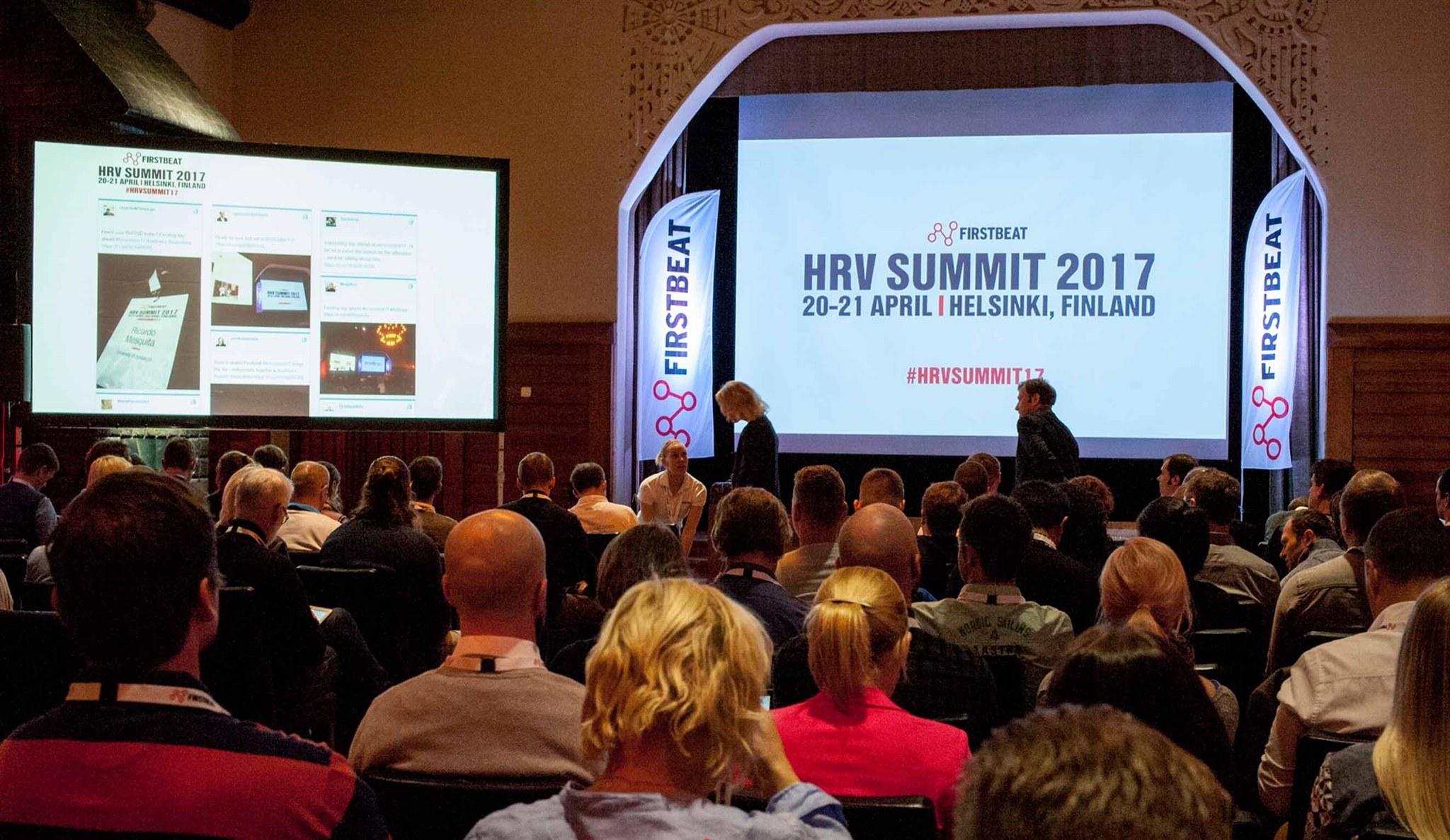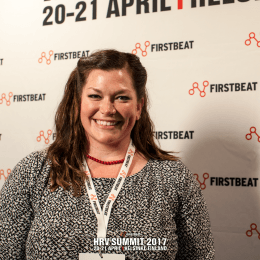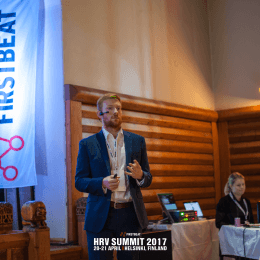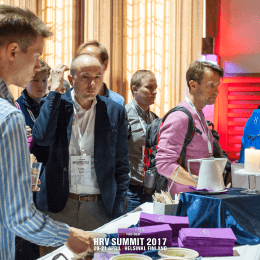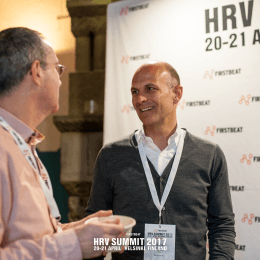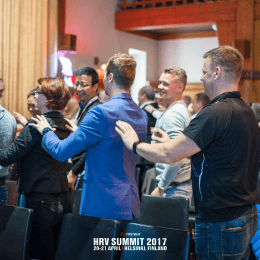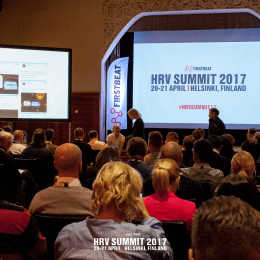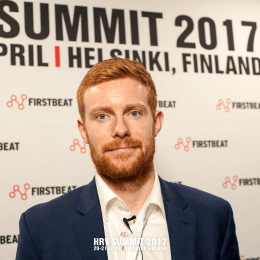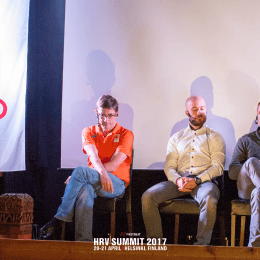The 1st HRV Summit gathered together wellness and sport professionals from 15 countries
The very first Firstbeat HRV Summit held in Helsinki gathered over 150 international guests to hear speakers from various corporates sharing their professional insights about HRV. Firstbeat’s founder and CEO Joni Kettunen opened the Summit by highlighting the life-changing opportunities of HRV.
“Awareness of HRV as a phenomenon dates back hundreds, and possibly thousands, of years. Today we have the technology needed to capture heart functions with sufficient detail and the analytic capabilities to see and interpret this phenomenon. This means that for the first time we are to transform this rich physiological phenomenon into highly accurate, personalized insights that help people make better decisions and live healthier, happier, and more productive lives,” he says.
See #hrvsummit17 for more news from the event.
Read summaries of all the HRV Summit presentations below.
Videos
Presentations
Simon Shepard from Optima-life stated that sleep is very fashionable in the UK these days. To be more specific, it’s fashionable not to sleep and to stress a lot, which is certainly not a good combination from a health perspective. Through experiences with various corporate cases, Simon has noticed that the biggest challenge in promoting healthier lifestyles is solving how to the shift the mindset of different people. Also, while technology offers countable advantages in the wellness sector, the most fruitful results come when working with people face to face: “Data plus education is still the king, encountering people gives you the influence to make a difference,” he says.
Florian Wolf from YourPrevention talked about the relationship between HRV and neuropsychology. “If you want to work with people, you need to bring them to neurobiology and behavior, as emotions produce molecules and molecules produce emotions,” he states and says that inflammation is the factor responsible of human degeneration. The information we get when working with people is not simply about lifestyle, but a holistic look at values, concepts and abilities – understanding what a person needs and feels. Florian ended his presentation with a thoughtful finding: “Those people, who were the oldest and the healthiest, also had the happiest life.”
Sleep is the time of recovery. This, in turn, is the source of our daily energy. Every week Dr. Henri Tuomilehto, from Oivauni Sleep Clinic, meets clients that say, “you’re my last hope.” That reflects how important good sleep really is. Henri works with all kinds of clients and has learned that each of us wants different things from recovery, e.g. employers want their workforce to perform better at their job. Even though sleep is the time we stay still, it is the active time of life. Many things happen while we’re asleep, and various stages of sleep take their turns in 90 minute cycles. Sleep is vital for our memory and cognitive function, repair of cell damage, and clearance of brain metabolites, to name of few. Still, 90% of people with sleep disorders don’t recognize that the lack of sleep is the cause for their various symptoms. One effective method for improving the quality of sleep – and thus overall health – is exercise. Exercise helps us to recover, so the fitter we are, the better we sleep. “The only medical specialist who doesn’t need to know about the risks of lack of physical activity, is a pathologist.”
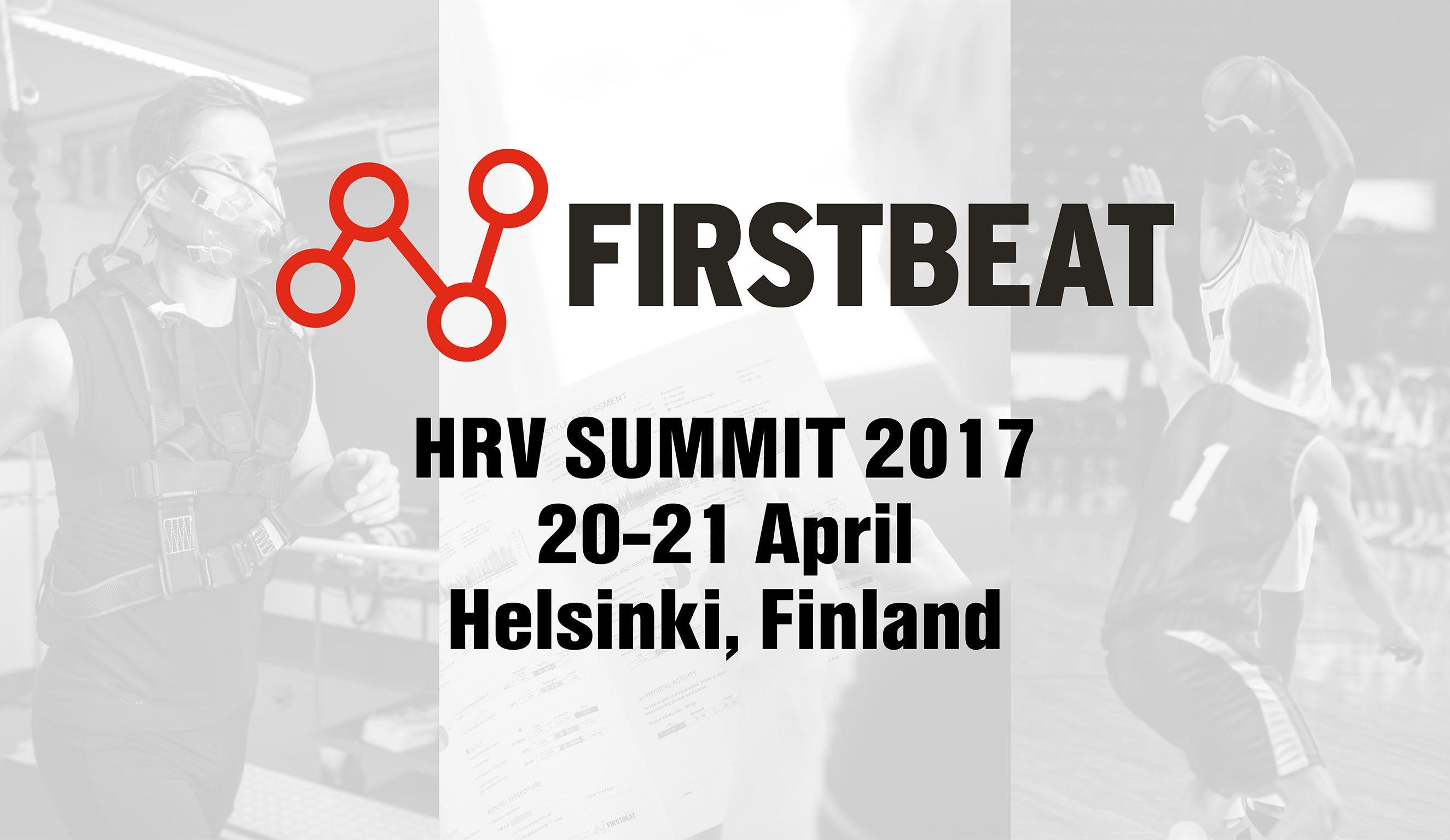
Training Load Monitoring in Rugby (no presentation slides)
Ryan Chambers, Welsh Rugby Union Group
Rugby is a zoo, says Ryan Chambers from Welsh Rugby Union Group. He clarified this description by adding that each player plays individually, so a coach must handle each player individually. Ryan emphasized that all information collected should have an action connected to it, meaning that all stakeholders from players to physiotherapists should take the total training load into consideration and communicate effectively with each other. But, whatever the metrics, simplicity is the key. “Always keep it simple.”
What it comes to sport, everything can be brought back to numbers. At least this is the case made by Josy Verdonkschot, head coach of the Dutch Rowing Federations women’s teams. Josy explained that rowing might look simple, but it’s a lot more than sitting on a boat. It’s hard work and real exercise that requires excellent physical condition. Josy’s team measures the heart rate of each rower, and they measure a lot because they don’t want any surprises. Always prepare and be prepared. Josy’s presentation was a fitting example of the utilization of HRV monitoring in elite sports. “Everything I do is by the numbers. I try to bring everything back to numbers,” he highlights.
Dr. Arja Uusitalo from the Finnish Institute of Occupational Health talked about HRV as a phenomenon and the role it can play in preventative healthcare. At the moment, HRV is yet not in use in clinical decision making, as more information for healthcare officials is needed to prove that HRV monitoring could actually be very beneficial tool and marker of our health and welfare. After all, we live in the middle of the revolution of measuring autonomic nervous function and in the future, HRV based methods will be taken into use within the world of diagnostics. Arja also mentioned the connection between HRV and vagus nerve stimulation used in epilepsy and chronic pain situations.
Do perceptions match reality? Not always, says Dr. Erica Thieman from the University of Illinois. Erica discussed stress measurement in socially demanding jobs, such as teaching. For the past 30 years, the way teachers’ stress has been measured not been particularly effective, as a simple questionnaire of three questions cannot identify the moments that cause stress and help resolve them. Erica highlighted that stress cannot be totally eliminated, so it’s important to focus on increasing recovery to be better prepared for the reality and situations to come. One strategy for increasing recovery is to stop using electronic devices like phones and tablets in bed before going to sleep.
What about the future of wearables? “You haven’t seen nothing yet,” declares Dr. Ilkka Korhonen, from PulseOn. Ilkka predicts that in the future there will be a lot more wearable sensors around. The most accurate sensor is the one that is used. In addition, the sensor should produce meaningful data and provide interesting, relevant, and actionable data. Heart rate certainly is a rich signature of life!
Furthermore, at the end of day 1 of the Summit, Firstbeat and the leading innovator in wearable and hearable biometric sensor technology, Valencell, announced their strategic collaboration to create meaningful user experiences and to explore the full potential of what biometric wearables can achieve. Firstbeat HRV Summit will be used as a platform for both companies to further discuss their collaboration as well as answer any questions on their expertise.
On the second day of the Summit, Firstbeat’s physiology research manager Tero Myllymäki revealed interesting findings based on the Firstbeat database: Good physical condition increases measured and self-estimated overall well-being. In other words, being in good physical condition makes you feel better!
Last but definitely not least, we’d like to thank all participants for making the first HRV Summit a successful and unforgettable event. At the same time, we’re hoping to meet again next year, as the second Firstbeat HRV Summit will be held in spring 2018 – see you there!
